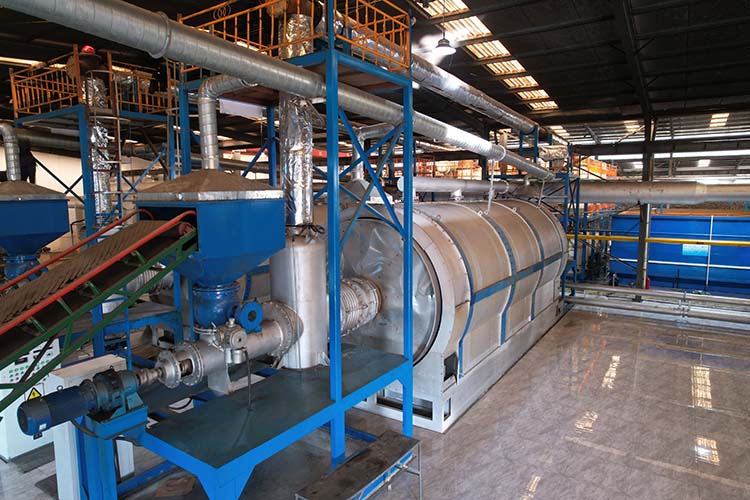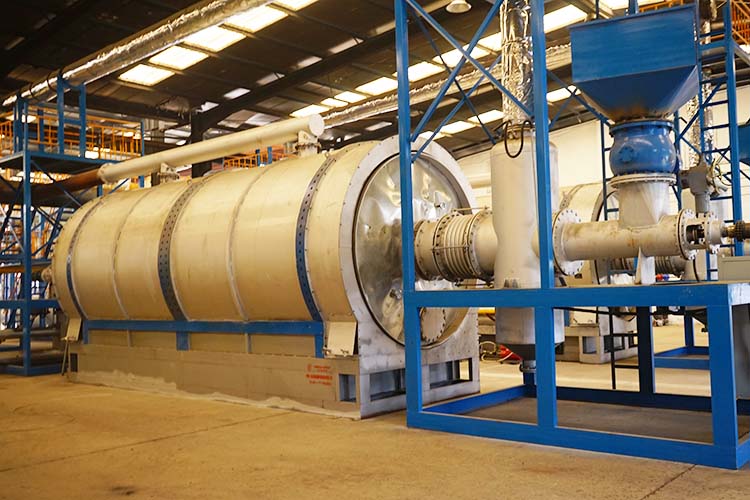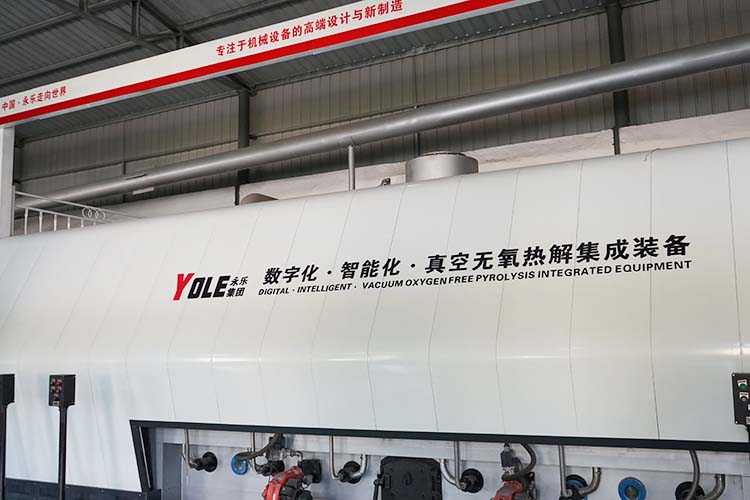In the environmental protection process of resource recycling, the high-temperature pyrolysis furnace serves as a pioneer, opening up a promising new path for organic waste treatment. Its core component, the pyrolysis reactor, is akin to a mysterious "magic container." When organic waste enters it, a fascinating thermal decomposition journey commences quietly in a high-temperature environment with little or no oxygen. The originally worthless waste is transformed through this process into valuable resources such as flammable gases, liquid oils, and solid residues, rejuvenating their utility.

The entire high-temperature pyrolysis furnace equipment consists of multiple precise and interconnected components, each playing an indispensable role in the organic waste treatment process. First, the feeding system acts like a highly trained "intelligent handler." With its precise sensing and control capabilities, it can accurately regulate the quantity and speed of organic waste input based on the real-time operating status of the pyrolysis reactor. Whether the organic waste is in lump, particulate, or paste form, the feeding system efficiently conveys it into the reactor, ensuring uniform and stable material delivery to avoid reduced pyrolysis efficiency due to uneven feeding, thus laying a solid foundation for subsequent pyrolysis reactions.
As the core hub of the equipment, the pyrolysis reactor is of paramount importance. It is meticulously constructed from specially developed high-temperature and corrosion-resistant materials, capable of withstanding the rigorous challenges of high temperatures, high pressures, and complex chemical environments. The reactor’s interior is equipped with a scientific and sophisticated temperature and pressure control system, functioning as an experienced "regulation master." It can flexibly and precisely adjust pyrolysis conditions according to the chemical composition, physical properties, and other characteristics of different organic wastes. Whether dealing with ordinary low-calorific organic waste or high-calorific, complex-composition special organic waste, the reactor provides the optimal pyrolysis environment, ensuring full and efficient pyrolysis reactions that maximize the extraction of latent value from organic waste.

The pyrolysis products generated by the reaction quickly enter the separation system for processing. The separation system acts as a meticulous "precision sorter," using magical precision to separate mixed flammable gases, liquid oils, and solid residues. Based on the physical and chemical properties of different products, it employs various methods such as condensation, filtration, and adsorption to ensure each product is purely and thoroughly separated for targeted subsequent utilization.
Additionally, the equipment is equipped with a complete tail gas treatment system. During pyrolysis, some tail gas inevitably forms, potentially containing trace harmful substances. The tail gas treatment system serves as a loyal "environmental guardian," removing harmful substances through a series of strict purification processes such as catalytic oxidation, absorption, and adsorption, ensuring the tail gas meets environmental standards before discharge and minimizing environmental impact.

Compared with traditional organic waste treatment methods like incineration and landfilling, the high-temperature pyrolysis furnace offers distinct advantages. Traditional methods often involve simple waste disposal, failing to achieve resource recycling and potentially causing severe secondary pollution. For example, incineration generates large amounts of harmful gases that damage the atmosphere, while landfilling occupies vast land resources and risks soil and groundwater contamination. The high-temperature pyrolysis furnace, through its unique pyrolysis process, ingeniously releases the energy in organic waste, converting it into usable energy and chemical products—truly achieving a magnificent transformation from "waste" to "resources." Meanwhile, pyrolysis in anoxic or hypoxic environments significantly reduces the generation of harmful gases like dioxins, effectively lowering atmospheric pollution. Moreover, the relatively small amount of solid residue can be further processed for use in construction materials, soil improvement, and other fields, further enhancing resource utilization and contributing to sustainable development.
Yongle Environmental Protection is mainly engaged in the research and development, production and sales of complete sets of technical equipment for organic solid waste disposal and comprehensive utilization. Production and manufacturing, domestic waste treatment equipment, tire pyrolysis equipment, medical waste disposal equipment, hazardous waste disposal equipment, and achieve efficient and comprehensive utilization of resources through independently developed low-temperature anaerobic pyrolysis equipment technology solutions.
Tags:High-temperature pyrolysis furnace builds a new path of resource circulation,High temperature pyrolysis incinerator,YONGLE GROUP
 Latest news
Latest news


























